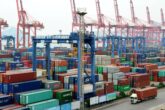June 13, 2016
Smarter Naval Power in the Indo-Pacific Region
In this paper, CNAS Military Fellow Commander Jennifer Couture points out that countering China’s A2/AD strategies in the future not only requires advanced technology, but calls for finding new ways to employ forces and capabilities already in the Navy’s inventory. She suggests that the exercise of naval power through forward presence, maritime security operations, engagement with partners and China allows the US to maintain access and influence to the Asia-Pacific region under current conditions; growing Chinese A2/AD challenges, however, require the US military to adopt alternative planning assumptions in terms of the scale of conflict (limited war), posture of unit (distributed lethality), scope of presence (pivot to Asia), and degree of ally integration (Operational-level).
The report is available online.
More from CNAS
-
Trump Administration Realises That The Tariff Strategy Has Backfired: Lisa Curtis
Trump administration realises that the tariff strategy has backfired, says Lisa Curtis, senior fellow and program director at the Center for a New American Security.Watch the ...
By Lisa Curtis
-
Ep 187: Richard Fontaine on the “Reverse Kissinger”
Richard Fontaine, CEO of the Center for a New American Security (CNAS) and co-author of No Limits? The China-Russia Relationship and U.S. Foreign Policy, joins the show to dis...
By Richard Fontaine
-
A Stroll Through the Indo-Pacific, the Most Important Region in the World
In this episode, we get into what’s driving the Indo-Pacific’s security dynamics, from China’s threats to Taiwan to AUKUS and the Quad to stability (or lack thereof) on the Ko...
By Lisa Curtis
-
Assessing China’s Nuclear Decision-Making
China’s rapid nuclear buildup is raising questions about how the country makes decisions related to nuclear weapons. This policy brief analyzes that trend by presenting three ...
By Jacob Stokes




